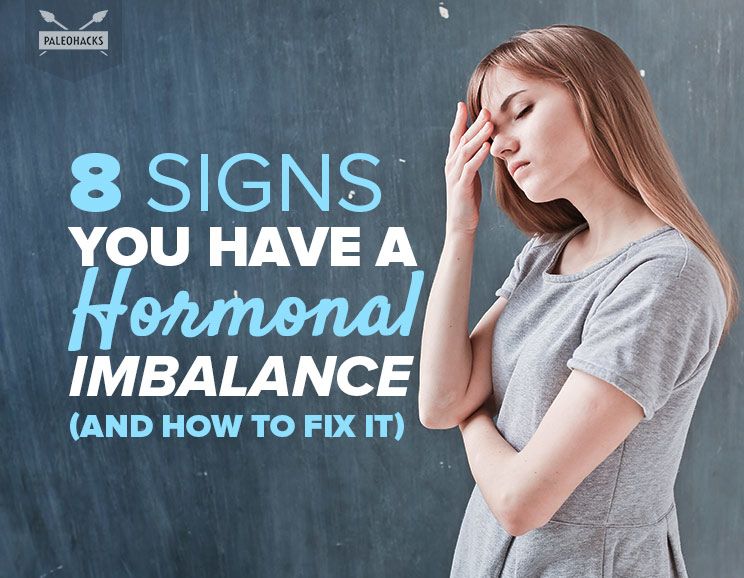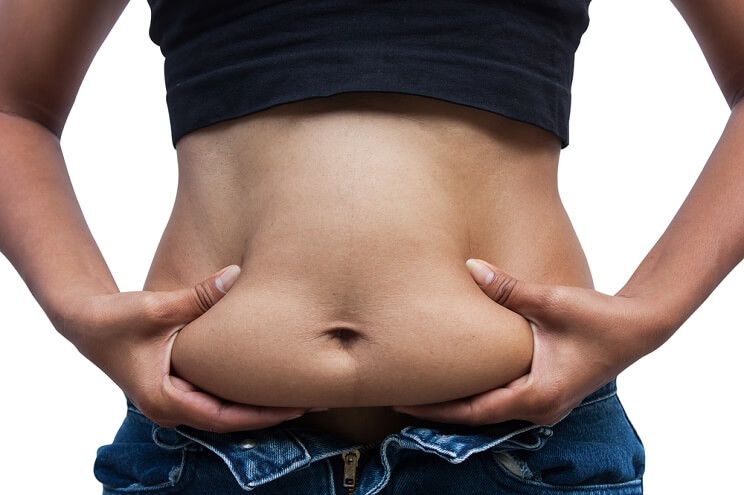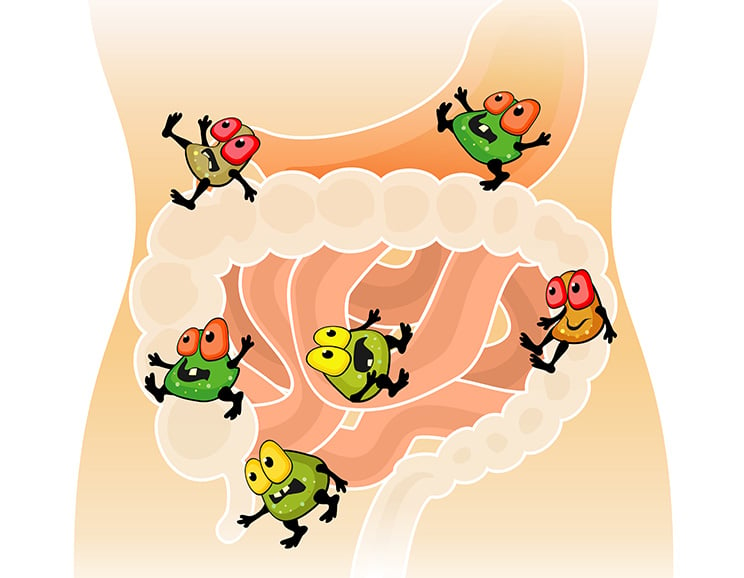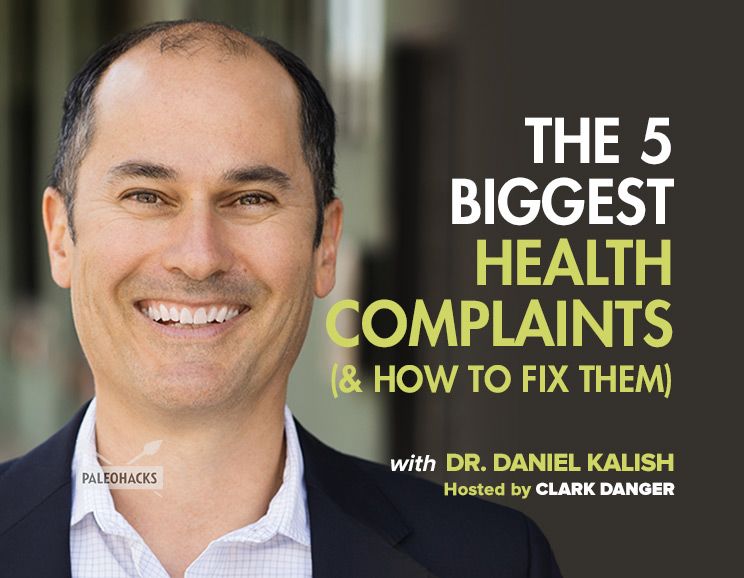Your hormones are tiny chemical messengers that travel throughout your body, delivering messages to your organs, tissues and cells to boost metabolism, build muscle, de-stress, lift mood, etc. The food you eat, how much you move (and the type of movements you perform), and lifestyle factors like sleep and stress management play fundamental and crucial roles in setting and maintaining ideal hormone balance.
Make the wrong food choices, lack exercise in your daily life, or burn the candle at both ends and it will come at a cost. Some of us can get away with this for a long time without suffering too heavily. For others, it can quickly derail health and performance goals.
While it’s human nature to look for the exciting and sexy new fixes to hormone imbalance, the truth is, an ancestral approach of tackling the things that impact you the most – food, activity, environment – are the answer that addresses the root cause of why these imbalances occurred in the first place.
Struggling to lose weight? Unable to focus? Chances are, your hormones are out of whack.
Grab Our FREE Guide To Fixing Your Hormones By Clicking Here!
Here is a quick look at 8 common hormone imbalances and how to fix them.
You Struggle to Get Out of Bed in the Morning
If you struggle to get out of bed in the morning or hit snooze multiple times before starting your day, then it’s a clear sign your circadian hormone output is out of whack. Specific hormones are produced in a cyclical or circadian pattern every day, and if their rhythm gets altered you’ll start to feel sluggish, fatigued or fail to thrive.
For example, your stress hormone cortisol should be high in the morning; it wakes you up, supercharges your brain and gets you ready to start your day. If you feel like it takes you a little time to get going in the morning or you need to pry yourself from the warmth of your bed, then your daily circadian cortisol high may be stuck in neutral. How does this rhythm get imbalanced?
Well, if you’re constantly on the go and drinking a lot of coffee or stimulants, it can impact your deep sleep and ultimately circadian pattern. Similarly, a busy social calendar and a few drinks every night can also hinder your deep sleep and circadian rhythm.
Ironically, if you’re busy and stressed, you normally reach for MORE coffee during the day to boost your brain and energy, and subsequently MORE alcohol in the evening to unwind and take the edge off. This is the perfect storm for circadian disruption. (Not to mention research shows drinking more than 4 cups per day is associated with increased risk of cardiovascular disease. [1]).
The Fix: Cut out coffee and alcohol for one week. I know, I know… it sounds horrible. For 7 days, replace coffee in the morning with green tea (but nothing after 3:00 pm), and in the evening, cut out the alcohol completely. In the first few days you’ll likely feel a bit irritable and sluggish in the morning, but by the end of the week you’ll be popping out of bed with natural energy on a daily basis.
You Crash After a High-Carb Meal
Stop me if this sounds familiar: you eat a tasty lunch, get back to the office and by the mid-afternoon, you can barely keep your eyes open? Or maybe it’s the high-carb cereal or oatmeal breakfast you knock back to start your day, only to be struggling to stay sharp by mid-morning? If you notice a significant crash after a high-carb meal, then you likely have poor insulin function (your blood sugar hormone that shuttles the sugars from your breakfast or lunch from your bloodstream into your cells).
[tweet_quote] Do you crash after high carb meals? Your insulin hormone could be to blame. [/tweet_quote]
If you’re overweight, out of shape, or in poor health and struggle with crashes after a high-carb meal, it’s because your insulin hormone is not working efficiently. Your body needs to pump out greater and greater amounts of insulin to cope with your high-carb lunch (as compared to a fit or lean person). This leads to a massive blood sugar and insulin high after your meal, followed by a roller coaster-like fall a few hours later.
The Fix: Adopt a low-carb diet to improve your blood sugar and insulin control. (2) High insulin levels can promote weight gain and a foggy brain, and shifting to a low-carb diet can help bring your levels back into balance. A Paleo diet fits the mold perfectly! By reducing carbohydrates, your body can become more “flexible” and burn your own body fat for fuel more effectively. When your insulin isn’t working efficiently, your body is metabolically “inflexible,” meaning it’s stuck relying on carbs you eat from food for energy (instead of your body’s own energy reserves). Reduce your carbs and you can kiss your afternoon crashes goodbye!
You Get Serious Cravings Throughout the Day
There are a lot different reasons why you could get cravings during the day. One hormone in particular is responsible for keeping you full – leptin, your “satiety” hormone signal – and when life gets busy or you make the wrong food choices, your leptin signal gets scrambled and cravings ensue.
If you feel like you’re always grazing on fruit, craving sweets, or looking for that post-dinner sweet fix, then your leptin levels are likely low. How do they get out of balance? Well, high insulin levels block the leptin signal, leading to more cravings (unfortunately not for lettuce wraps!). It’s a vicious cycle because the more sugars and simple carbs you eat (because of your cravings), the more insulin output and the more you suppress leptin. (3) [tweet_quote] Stress scrambles the satiety hormone leptin, making you reach for sweets when you’re feeling the crunch. [/tweet_quote]
Stress also blocks leptin. It’s no wonder when you get stressed the first thing you reach for is a sweet treat or dessert (more often than not before you “feel” stressed). This three-headed monster of insulin and cortisol problems disrupting your leptin levels is the perfect storm for sugar cravings.
The Fix: In the short-term, aim for dark chocolate (70% or more) as your go-to treat when you get afternoon cravings. Take a handful of frozen grapes or berries in the evening to give you a little sweet rush without the usual big sugar hit. For long-term resolution, see solutions #1 and #2.
You’ve Got High Belly Fat
High belly fat reflects high levels of visceral fat, which is the fat that accumulates around your organs. It is very pro-inflammatory and dangerous for your overall health. (4) The vast majority of your cortisol receptors are located around your mid-section. If your belly fat is high, your cortisol stress levels will be out of balance and leading you down the path to weight gain, poor health and lack of vitality. Cortisol is the “yang” to insulin’s “yin,” responsible for increasing blood sugar levels by breaking down your muscle mass. If you have a cortisol problem, it can create an insulin problem.
The Fix: If you’ve got high belly fat, stop drinking beer (and reduce other alcohol as well) until things start shifting back in the right direction. There is a reason they call it a beer belly! Visceral fat is also strongly connected to poor insulin function and thus high insulin levels, so lowering your carb intake is also a great way to lower your systemic or total body inflammation. (Note – you can run the CRP lab test to find out your levels of systemic inflammation.)
Your Libido Is Low
A classic sign of a hormone imbalance is low libido. If you’re training intensely and pushing yourself to the limits, one of the primary signs of overtraining is losing your mojo. Similarly, if you’re burning the midnight oil and working long hours, your libido can hit rock bottom as stress levels increase. In men, as cortisol stress levels go up, testosterone goes down. (5) In women, stress levels lower the female hormone progesterone, which is one of your primary libido hormones.
The Fix: Low T is the most common cause of low libido in men, while low progesterone is the cause in women, but the answer isn’t usually in a cream or gel from your doctor. The answer is to address the root cause… stress! If you’re training hard at the moment, it’s time to revisit your training plan and see if you’ve gone from over-reaching (pushing yourself beyond your limits to adapt and grow stronger) to overtraining (tired, rundown and lost your mojo). If you’re just really busy at work, make time for more sleep, less coffee and fewer alcoholic drinks while scheduling more relaxation at home or a vacation to disconnect, recharge and reinvigorate your life.
You’ve Gained Weight Around the Hips
If you’re naturally more of an hourglass- or pear-shaped woman, and feel like you’ve been gaining weight recently, it’s probably accumulated around your hips. This is where body fat is predominantly distributed in women, but even more so in pear-shaped or estrogen-dominant type women. As estrogen levels climb too high, you’ll experience irritability, heavier menses, breast tenderness, weight gain and worsening of premenstrual symptoms. If you’ve gained weight, body fat also produces estrogen, adding to the severity of your symptoms.
The Fix: Your liver and digestive system play a key role in metabolizing excess estrogens. Make sure your bowels are regular every day by incorporating lots of veggies and fruit, and be sure to keep hydrated. Fermented foods like sauerkraut, kimchee, and natto miso are fantastic additions. To support a healthy liver, add more cruciferous veggies rich in sulphoraphone, which help to support liver detoxification and clearance of excess “bad” estrogens. (6)
You’re Cold, Tired and Your Hair Is Lifeless
Your thyroid gland is a bellwether for your overall health. If something in your body is off balance, the thyroid responds by ramping up or down its function. Hallmark signs of low or sluggish thyroid function are cold hands and feet, constant fatigue, thinning or dull hair and skin, as well as sluggish bowels. (When your thyroid slows down, everything in the body seems to slow down!)
Like a lot of hormones on this list, stress plays a major role. Your cortisol stress hormone inhibits the production of the thyroid hormone, prevents the conversion to the “active” T3 form of the hormone, and can even make your cells resistant to thyroid hormone (a fancy medical term that means your body can make thyroid hormone just fine, but your body is not using it effectively). (7) In short, it’s like having a bad connection on your mobile phone – slow service that leaves you frustrated and unhappy.
The Fix: Supporting your thyroid gland – responsible for keeping your metabolism running smoothly, energy levels up and brain sharp – can come in many different forms. However, there is a strong connection between stress, inflammation and a sluggish thyroid. As your stress levels increase, so does inflammation in the body, which keeps your thyroid stuck in the mud. For anyone struggling with potential thyroid problems, start with the fundamentals: eliminate sugar, ditch the caffeine, limit your alcohol and get more sleep. (I know, I know… all the exciting stuff, but remember it’s all about the fundamentals.) Next, getting a full thyroid panel run – TSH, free T4, free T3, anti-TPO antibodies and reverse T3 – is a great way to establish baseline levels for yourself and to investigate whether there is a potential thyroid problem brewing.
Your Mood Is Low
The consumption of simple sugars has skyrocketed over the past 50 years and the rates of type II diabetes are climbing right along with them. There is a strong connection between depression and poor blood sugar control. It’s no wonder the World Health Organization predicts depression will be the leading cause of disease burden globally. (8) A growing body of research is connecting the dots, indicating that high blood sugars lead to (and worsen) depression, while depressions leads to (and worsens) diabetes. (9) It’s the ultimate “chicken and egg” scenario, and the downward spiral seems to be impacting everyone to some degree.
The Fix: The research shows that high blood sugar and insulin levels dramatically increase your risk of low mood and depression. While there are many causes of low mood, it’s important to address the fundamental hormones that impact so many areas of your health. A simple HbA1c blood test, a three-month average of your blood sugars, will tell you exactly where you stand. Ideally, your levels should be between 4.8-5.2%. If you find yourself higher than 5.2%, then adopting a low carb Paleo diet is the perfect platform for bringing your levels back into range.
There are many more reasons why hormones can become unbalanced than I’ve presented on this list. However, in most cases, if you can do 20% of the fundamentals well, you’ll address 80% of your symptoms and health concerns. Adopting a Paleo lifestyle is more than just what you eat; it’s also your lifestyle, sleep and activity habits. Use these Paleo principles and reset your hormones so you can thrive and achieve your health and performance goals.
(Read This Next: 6 Hormones That Completely Change Your Weight and Health)












 7 Safe Pregnancy Exercises for Every Trimester
7 Safe Pregnancy Exercises for Every Trimester








Show Comments